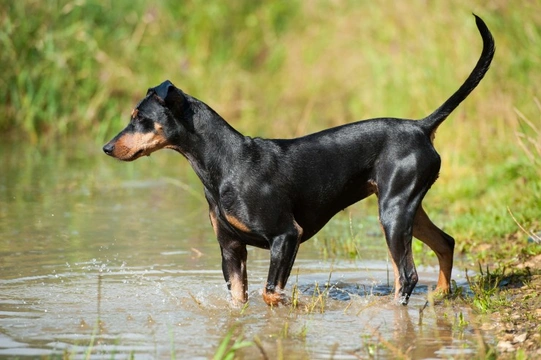
What you need to know about the pinscher dog breed
Many people immediately think of the Doberman pinscher when they hear the word “pinscher” – but the Doberman is just one of several different pinscher breeds, and one of them is simply known as a pinscher, which is the breed we’re going to talk about within this article.
Pinchers are medium-sized dogs that are classed by The Kennel Club within the working dog group, and they have some obvious similarities to the larger Doberman breed at a first glance. The pinscher originated in Germany, where they were historically used for working roles but today are more commonly kept as pets – and they’re not hugely common here in the UK, despite their popularity in their home country.
The pinscher is ranked 175th in the UK popularity stakes out of a total of 241 different dog breeds and types, so it is fair to say that they are reasonably uncommon and not the type of dog you are likely to spot regularly when out and about on walks.
However, the pinscher is a versatile, interesting dog breed that has a lot going for it, and if you’re in the market for a new medium-sized dog and are trying to narrow down your options, you might want to consider the pinscher.
In this article we will look at the pinscher dog breed in more detail, and examine their temperaments and what type of homes and owners they are best suited to. Read on to learn more.
What is a pinscher?
A pinscher is a medium-sized dog that is lean and lithe, standing between 43-51cm tall at the withers and weighing between 11-20kg. They share some physical similarities with both the larger Doberman pinscher and the smaller miniature pinscher, having a short, sleek coat that can be either red, fawn, or blue or black with tan markings.
They are strong and muscular for their size, but this is made up of lean muscle mass rather than bulk, and they have a lithe, leggy conformation that is lean and proportionate, finished with a long, tapered muzzle and balanced by a long tail with a slight curve to it.
How much do pinschers cost to buy and care for?
The average advertised price in the UK on Pets4Homes for a Kennel Club registered pedigree pinscher is around £615, and for a non-pedigree dog, around £425. These prices are towards the very low end of the average spectrum across all dog breeds and types, making them less costly to buy than many other medium-sized dog breeds.
However, because pinschers aren’t particularly common in the UK, it is not always easy to buy one – your nearest breeder might be some distance away, and you will almost certainly have to register your interest and join a waiting list to choose a puppy from a future litter.
In terms of the cost of keeping and caring for a pinscher, they’re around the middle of the road – they’re not as economical to keep as some smaller dog breeds, but neither are they prohibitively expensive either.
Pinschers require medium-sized accessories, and the cost of feeding them and providing their veterinary care is around the average mark too.
What sort of temperament do pinschers have?
Pinschers have relatively high energy levels, and need quite a lot of exercise. They have good levels of stamina and endurance, and will enjoy a couple of lively, varied walks of about an hour long each day.
They are also generally quite amenable to being left alone for a couple of hours at a time without becoming destructive or suffering from separation anxiety.
Pinschers tend to be calm and personable in the house, and they form strong bonds with their families and are usually very relaxed in their presence. However, they do have fairly strong guarding tendencies, and make for good natural watchdogs. They may be slightly wary of strangers, but this can usually be counteracted with proper introductions.
Pinschers are also very bold dogs that won’t back down from an opponent, and so proper training and socialisation is vital for dogs of the breed to ensure that they behave appropriately with other dogs and people. They also have a very strong prey drive, which is a throwback to their working histories, and so care must be taken to protect local cats and wildlife when walking the dog, and to train them for good recall skills.
Caring for and managing a pinscher
Pinschers are very rewarding dogs to own, and they have an intelligence and willingness to learn that makes them highly amenable to training and more than capable of learning a lot of commands.
However, as a switched on, confident breed, they do need an experienced owner and handler who can ensure that the dog channels their attentions on positive things, and does not become overly dominant or pushy. Pinschers often get on well with older children, but they may find very young children who make a lot of noise or keep bothering them too much, and so are generally recommended for adult households, or families with only older children.
Proper socialisation is vital for the younger pinscher, so that they can learn the limits of acceptable play and how to behave with other dogs. It is also important to ensure that the dog’s garden is securely fenced, to prevent them from wandering off or making a fuss if people walk too close to their territory!
Pinschers are not one of the breeds that are widely recommended for the first-time dog owner, but if you do have your heart set on owning a pinscher and do plenty of research before you get one, there is no reason why you can’t live happily with your new dog and get on very well together.



